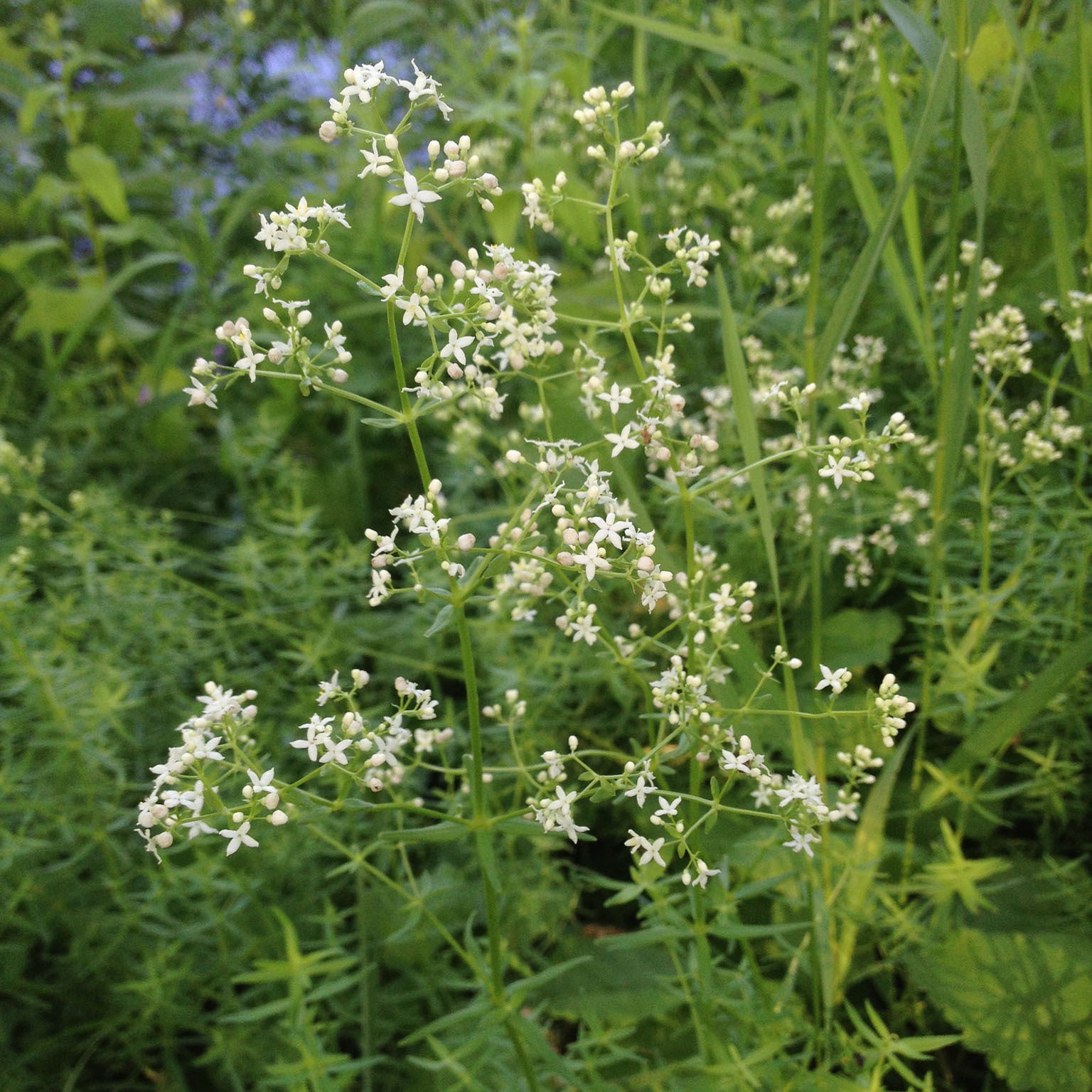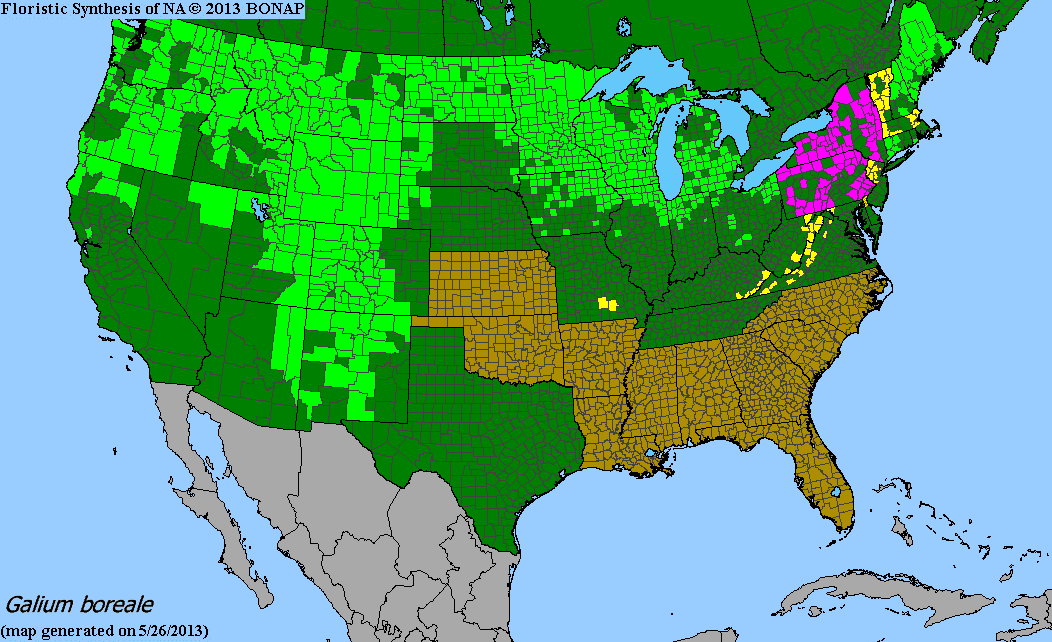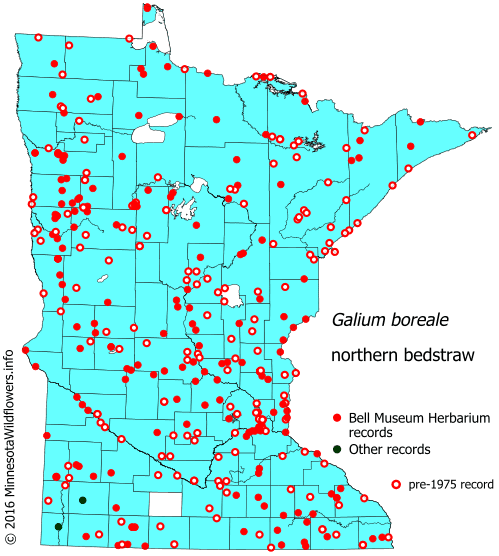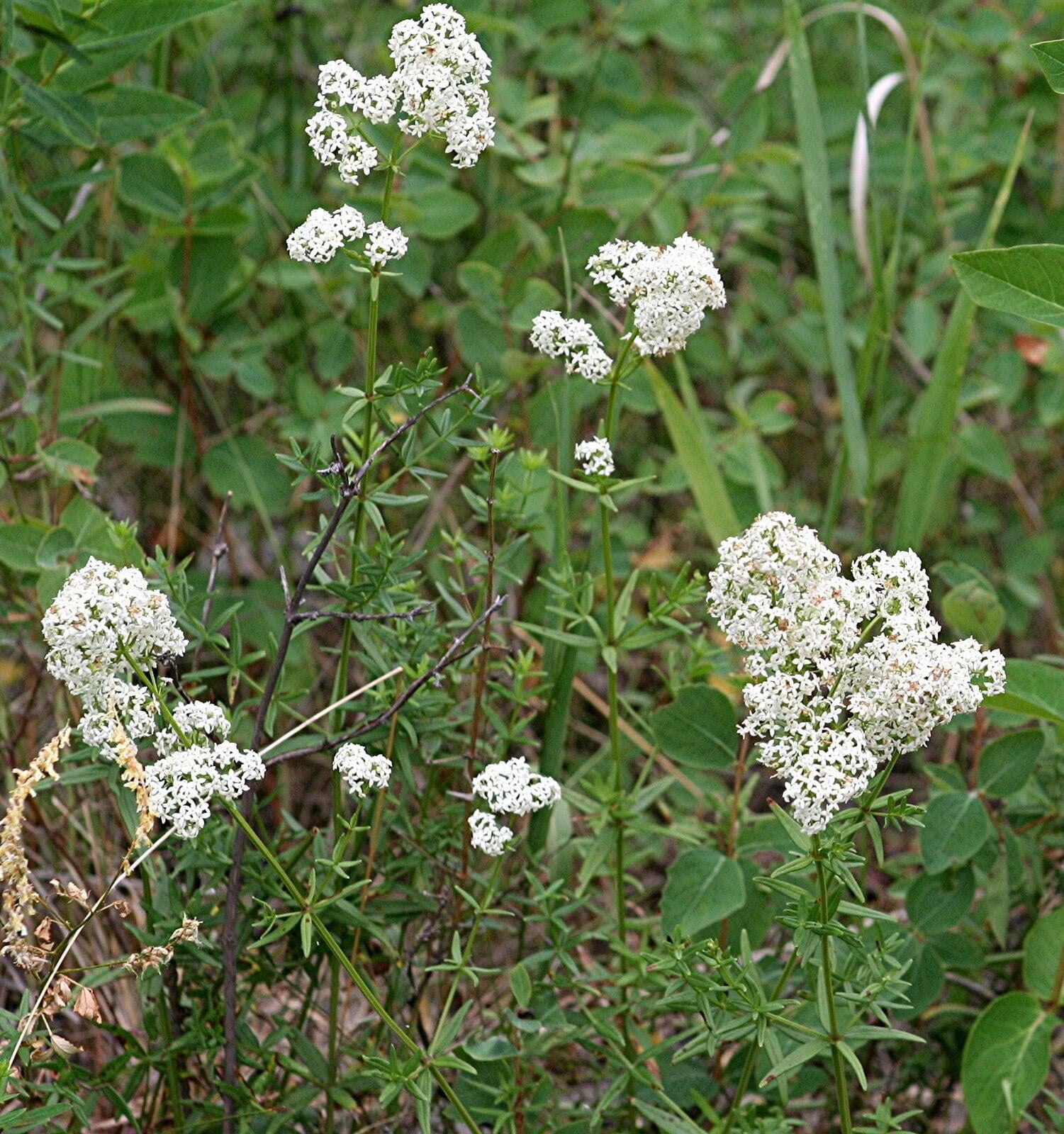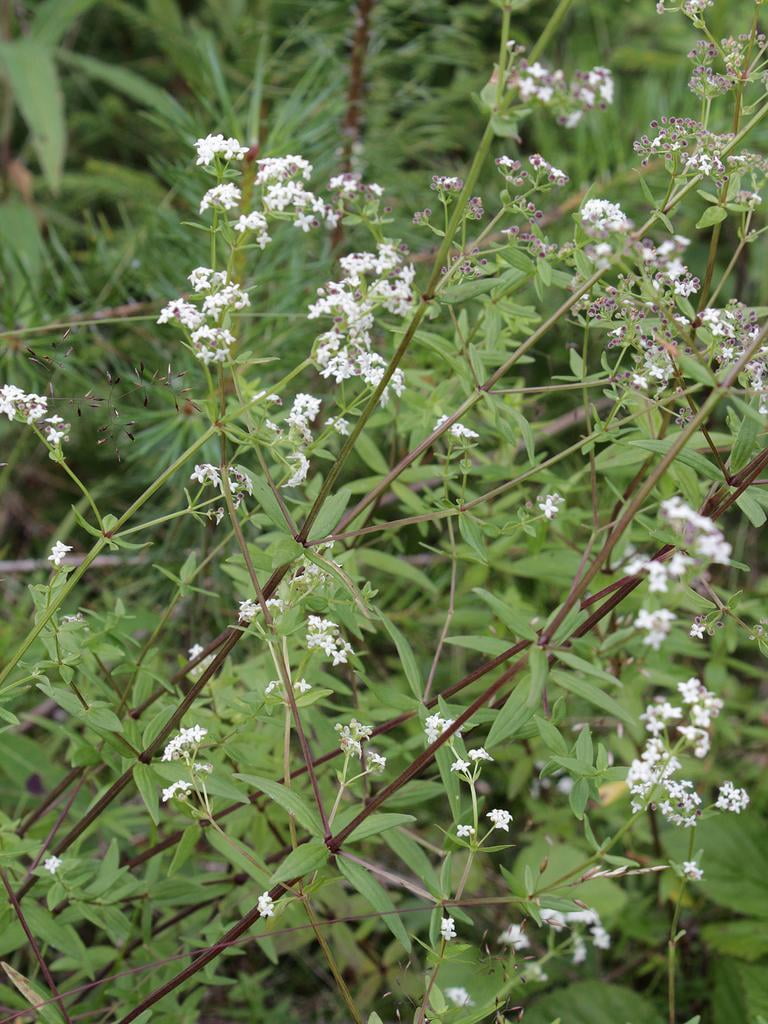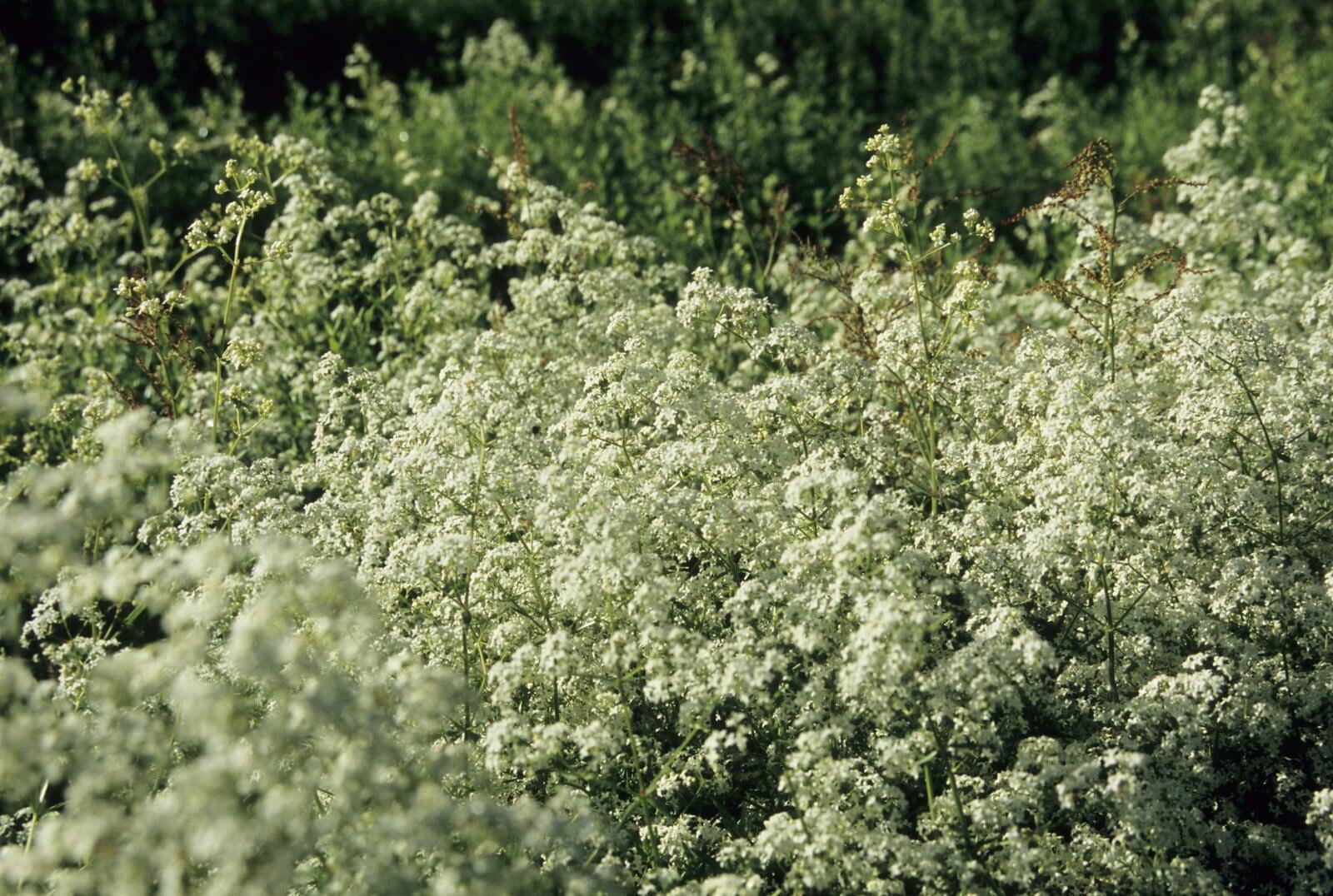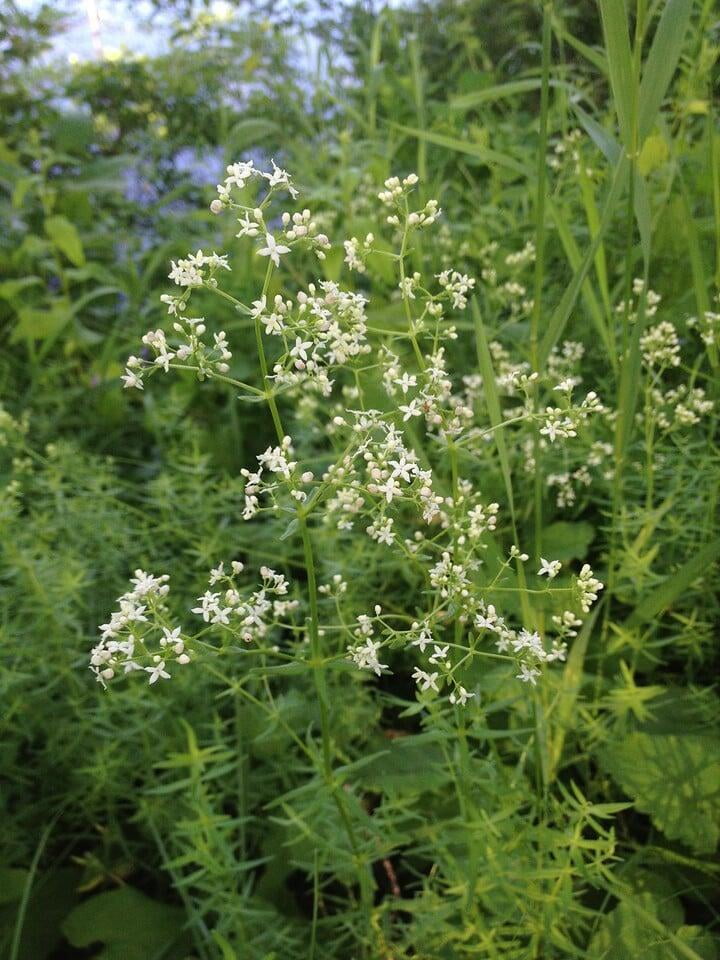Galium boreale
Northern bedstraw Description:
Galium boreale, also known as northern bedstraw, is a perennial plant species in the Rubiaceae family. It is native to northern North America, including Alaska, Canada, and parts of the northern United States.
This plant grows to a height of 10-80 cm, with a slender, four-sided stem that is often reddish and has small downward-facing hairs. The leaves are arranged in whorls of four to eight and are narrow, lance-shaped, and up to 3 cm long. The leaves and stems have a slightly rough texture due to the presence of small, stiff hairs.
The flowers of Galium boreale are small, white, and star-shaped, with four to eight petals. They grow in clusters at the top of the stem and branches and bloom from June to August. The plant produces small, egg-shaped fruit that are less than 1 cm long and covered in short hairs.
Galium boreale is typically found in damp to dry habitats, including forests, meadows, bogs, and rocky slopes. It is often used for medicinal purposes by some Indigenous groups, who use the plant to treat a variety of ailments, including colds, coughs, and digestive issues.
Native Range:
Northern bedstraw is native to most of the continental United States with the exception of the Southeastern portions of the country including Georgia, Florida, and surrounding states.
Standard Plant Information:
Plant Height: 1' - 3'
Bloom Time: June - August
Preferred Habitat: Does well in part shade to full sun. Often found in open woods, woodland edges, fields, and prairies.
Sowing:
For most homeowners, the best option is to scatter seed on the ground by hand broadcasting at a minimum of 16-64 pls ounces per acre. For even coverage, we recommend that you broadcast seed in perpendicular rows across the site to ensure even coverage.
You’ll want to broadcast any grass seed first, which will get raked into the soil lightly. Next, it is ideal to mulch the area lightly with either a clean (no seed) straw or preferably with our native Little Bluestem straw, sold at our retail garden centers. After a light mulching is complete, now it’s time to broadcast your native wildflower seeds, which should not be raked into the soil. A good rain or watering is sufficient to cover the seed.
Planting:
Simply dig a hole in the soil slightly larger than the plant’s roots. Ensure that the soil line of the plant is maintained during the transfer (i.e. the plant should be at the same level with the ground as it was in the pot). Pack any loose dirt back around the plant and make sure you water it well the same day to ensure it has the best chance of survival.

